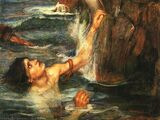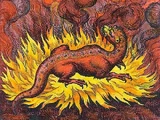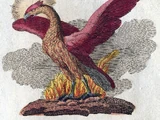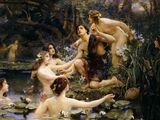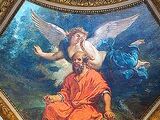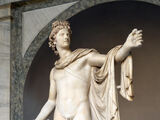(Adding categories) Tag: categoryselect |
No edit summary |
||
| (6 intermediate revisions by 2 users not shown) | |||
| Line 1: | Line 1: | ||
| + | [[File:Altar Mars Venus Massimo.jpg|thumb|upright=1.7|Romulus and Remus, the Lupercal, Father Tiber, and the Palatine on a relief from a pedestal dating to the reign of Trajan (AD 98–117).]] |
||
| + | '''Roman mythology''' is the body of traditional stories pertaining to ancient Rome's legendary origins and religious system, as represented in the literature and visual arts of the Romans. "Roman mythology" may also refer to the modern study of these representations, and to the subject matter as represented in the literature and art of other cultures in any period. |
||
| + | |||
| + | The Romans usually treated their traditional narratives as historical, even when these have miraculous or supernatural elements. The stories are often concerned with politics and morality, and how an individual's personal integrity relates to his or her responsibility to the community or Roman state. Heroism is an important theme. When the stories illuminate Roman religious practices, they are more concerned with ritual, augury, and institutions than with theology or cosmogony. |
||
| + | |||
| + | The study of Roman religion and myth is complicated by the early influence of Greek religion on the Italian peninsula during Rome's protohistory, and by the later artistic imitation of Greek literary models by Roman authors. In matters of theology, the Romans were curiously eager to identify their own gods with those of the Greeks (''interpretatio graeca''), and to reinterpret stories about Greek deities under the names of their Roman counterparts. Rome's early myths and legends also have a dynamic relationship with Etruscan religion, less documented than that of the Greeks. |
||
| + | |||
| + | While Roman mythology may lack a body of divine narratives as extensive as that found in Greek literature, Romulus and Remus suckling the she-wolf is as famous as any image from [[Greek mythology]] except for the Trojan Horse. Because Latin literature was more widely known in Europe throughout the Middle Ages and into the Renaissance, the interpretations of Greek myths by the Romans often had a greater influence on narrative and pictorial representations of "classical mythology" than Greek sources. In particular, the versions of Greek myths in [[Ovid]]'s ''Metamorphoses'', written during the reign of Augustus, came to be regarded as canonical. |
||
| + | |||
| + | Articles that are a part of '''[[Roman mythology]]''' will appear here. To add an article to this category, add '''<nowiki>[[Category:Roman mythology]]</nowiki>''' to the page. |
||
| + | |||
| + | {{Roman mythology}} |
||
[[Category:Mythology by Culture]] |
[[Category:Mythology by Culture]] |
||
[[Category:European mythology]] |
[[Category:European mythology]] |
||
| + | [[Category:Greco-Roman mythology]] |
||
| + | [[Category:Mythology]] |
||
Revision as of 14:59, 17 September 2019
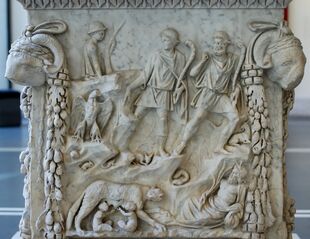
Romulus and Remus, the Lupercal, Father Tiber, and the Palatine on a relief from a pedestal dating to the reign of Trajan (AD 98–117).
Roman mythology is the body of traditional stories pertaining to ancient Rome's legendary origins and religious system, as represented in the literature and visual arts of the Romans. "Roman mythology" may also refer to the modern study of these representations, and to the subject matter as represented in the literature and art of other cultures in any period.
The Romans usually treated their traditional narratives as historical, even when these have miraculous or supernatural elements. The stories are often concerned with politics and morality, and how an individual's personal integrity relates to his or her responsibility to the community or Roman state. Heroism is an important theme. When the stories illuminate Roman religious practices, they are more concerned with ritual, augury, and institutions than with theology or cosmogony.
The study of Roman religion and myth is complicated by the early influence of Greek religion on the Italian peninsula during Rome's protohistory, and by the later artistic imitation of Greek literary models by Roman authors. In matters of theology, the Romans were curiously eager to identify their own gods with those of the Greeks (interpretatio graeca), and to reinterpret stories about Greek deities under the names of their Roman counterparts. Rome's early myths and legends also have a dynamic relationship with Etruscan religion, less documented than that of the Greeks.
While Roman mythology may lack a body of divine narratives as extensive as that found in Greek literature, Romulus and Remus suckling the she-wolf is as famous as any image from Greek mythology except for the Trojan Horse. Because Latin literature was more widely known in Europe throughout the Middle Ages and into the Renaissance, the interpretations of Greek myths by the Romans often had a greater influence on narrative and pictorial representations of "classical mythology" than Greek sources. In particular, the versions of Greek myths in Ovid's Metamorphoses, written during the reign of Augustus, came to be regarded as canonical.
Articles that are a part of Roman mythology will appear here. To add an article to this category, add [[Category:Roman mythology]] to the page.
| Roman mythology articles | |
|---|---|
| Deities | Apollō • Bacchus • Bellona • Bona Dea • Castor and Pollux • Ceres • Cupid • Diana • Dīs Pater • Egeria • Fauna • Faunus • Flora • Genius • Hercules • Janus • Juno • Jupiter • Lares • Liber • Libertas • Mars • Mercury • Minerva • Orcus • Neptune • Penates • Pluto • Pomona • Priapus • Proserpina • Quirinus • Saturn • Silvanus • Sol • Venus • Vesta • Vulcan |
| Heroes | Hercules |
| Groups | Demideities • Deities • Titans |
| Creatures | Faun • Sīrēnēs • Centaur |
| Titans | |
| Locations | Rome |
| Topics | Titanomachy |
All items (144)
-
Category:Allies of Troy during the Trojan War
-
Category:Anatolian peoples
-
Category:Children of Mars
-
Category:Deaths during the Trojan War
-
Category:Enemies of Troy during the Trojan War
-
Category:Fauns
-
Category:Genii
-
Category:Peoples in Roman mythology
-
Category:Personifications in Roman mythology
-
Category:Roman creatures
-
Category:Roman deities
-
Category:Roman locations
-
Category:Roman mythology images
-
Category:Roman Mythology Library

